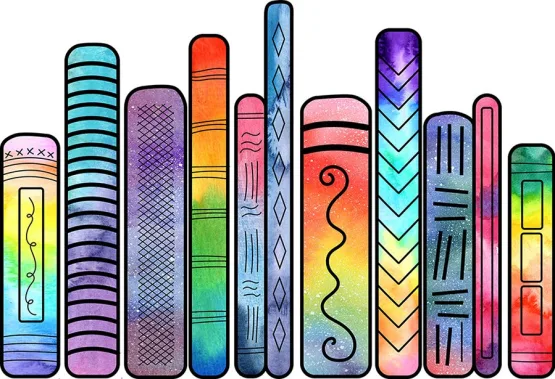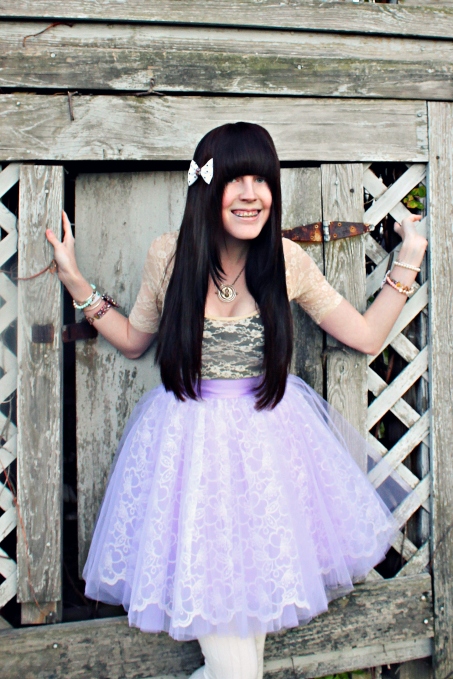If you’ve ever looked at an effeminate-looking guy with excellent fashion sense and thought to yourself, “He must be gay,” then you’re guilty of doing what I think we all sometimes do – stereotyping based on clothing and appearance. I’m no stranger to being on both sides of this, so today I’m going to get to the bottom of the “gay fashion sense” debacle, debunk some myths about how LGBTQA people dress, and discuss how my fashion style plays into my sexual orientation.
Two things that are near and dear to me often come together in the same sentence – being LGBTQA and my fashion sense. I’m openly bisexual, and most people who encounter me on a personal level know that I am. I also wear as many colors as I can in a day, and was known as “The Tutu Girl” at my high school. I never thought of these two things as connected, but it’s strange how often people ask about my orientation simply based on what I wear.
I remember the first time I was asked about my orientation based on my outfit. I was in ninth grade, and one of my classmates approached my lunch table to ask if I was a lesbian. I was shocked. I had never been asked that, and she had no inkling to assume this beyond my rainbow attire.
I wear a lot of colors, often in a rainbow theme, to this day. I’m no longer surprised when I’m asked about my sexual orientation based on this fact alone. But it leads me to wondering whether there is a real such thing as LGBTQA fashion sense, and whether it can be identified and categorized.
(A photo of me wearing a lot of rainbow attire.)
One of my closest friends is a gay cisgender male, and he has excellent fashion sense most of the time. He, too, wears rainbow bracelets, and he pairs them with button downs and plaid scarves. It’s simple, but people notice – and ask him if he’s gay, or just assume. I can’t help but admit it. I assumed he was gay before he came out to me, as well.
Is there something behind the stereotypes? I don’t know that there are stereotypes for bisexuals/pansexuals, but you expect a gay man to be well dressed, maybe a little girly, and on the adorable side. You expect a lesbian to wear flannel (what is this, Lumberjacks Anonymous? no) and not be very fashionable, perhaps with a short haircut to match.
Figuring out what to do with stereotypes all comes down to identifying where they come from. Most stereotypes are a product of the mass media, which often perpetuates heteronormative and sexist ideals because that’s what our society typically does en mass.
Some of it, however, might come down to the way that LGBTQA individuals break stereotypes, and are used to breaking them. Many of us have faced other barriers in coming out about our sexual orientation or gender identity, so once that hurdle is out of the way, dressing “abnormally” seems like small peas.
(A photo of me wearing a full lavender tulle skirt.)
In my case, I don’t purposefully correlate my fashion sense to speak to my sexual orientation. I try to tell people: I don’t wear rainbow because it represents LGBTQA Pride. I wear rainbow because I think it’s fabulous and cute. I wear rainbow because I feel sad when I leave out one of the colors. If it so happens to show support for my community, that’s cool too. But it’s not intentional.
But I also think there’s a grain of truth to the idea that LGBTQA people are just forced to be more comfy cozy with the idea of not passing as “normal.” I’ve known I was bisexual since I was 10 years old. It’s one thing that I knew about myself as a kid that hasn’t changed. I’ve faced a lot of hurdles with trying to “seem normal,” between being bisexual and having a developmental disability, and I just don’t want to try to fit in any more. I don’t try to hide my personality or censor my clothing, excepting situations where I need to wear a work uniform or business casual/professional clothing for similar reasons. You get what you get – the full 100% Alaina, and you can have all of me or none.
Although I think stereotypes are sometimes founded in grains of truth – my adorable gay friend serves as an example – I also think they’re just completely wrong sometimes. My girlfriend and I are both bisexual, and while people guess about me when I’m wearing a rainbow tutu and cat ears, they’d rarely guess about her based on her clothes. She has long hair, doesn’t own flannel, and wears beautiful makeup and can shovel in high heels (a feat that I cannot even close to perform). Some of my trans* friends meet the stereotypes for the gender they truly are, but others don’t. I have transgender girl friends that don’t like to apply makeup, but love to hang out in workout gear all day after a day of sports. My adorable gay friend’s boyfriend is the opposite of him fashion wise – he admits to just “picking random shirts out of his closet and throwing them on.”
(A photo of me and the friend mentioned in this blog post.)
Stereotypes are just that – they don’t always apply, because they’re stereotypes. LGBTQA people may feel more comfortable dressing in whatever way they want, because they’ve often already overcome the barriers of “not fitting in” to mainstream society. But if you’re assuming the short girl with rainbow socks and a tutu is gay, you just might want to actually ask – she could be bisexual, instead.
Love Always,
Alaina





